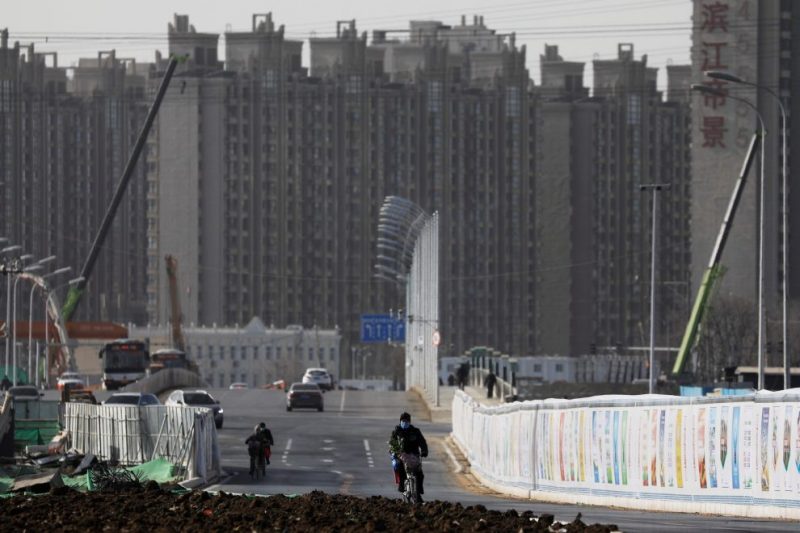The head of China’s central bank has told state media that financial risks from the country’s local government debt crisis and other concerns have been reduced.
In an interview with state broadcaster CCTV, Pan Gongsheng, governor of the People’s Bank of China, said: “China’s overall financial system is sound. The overall risk level has significantly declined.”
Pan and other top financial policymakers have been focused on massive debts accumulated by developers in the real estate sector, which has collapsed over the past three to four years.
ALSO SEE: China’s Central Bank Deflates Long Rally in Government Bonds
Pan said “the number and debt levels of local government financing platforms are declining,” and that the cost of their debt burden had “dropped significantly.”
However, a recent report by one of the world’s leading credit rating agencies suggests that China’s local government debt crisis is far from resolved.
A report by S&P Global Ratings late last month said that while risks may have been reduced, debt accumulated by Local Government Financing Vehicles (LGFVs) “remains a big problem.”
At least 1 trillion yuan ($140 billion) of LGFV bonds are due to mature over the next couple of quarters, the report said, adding that “bonds just represent no more than 20% of our estimated LGFV total outstanding debt.”
So, “refinancing pressure is acute” and “conditions are challenging,” it said.
“On average, about 25% LGFV debt matures over the next 12 months, but that rises to more than 30%-40% for many lower-tiered and weak entities.
“It won’t be easy to quickly reverse the debt momentum after years of fast growth. Last year LGFV debt growth dropped moderately – but was still a high single-digit. We think borrowings will likely grow at a mid-to-high single digit over the next couple of years.
“The authorities’ control over LGFV bond issuance has led to negative funding (ie, net repayment) for three consecutive quarters in the domestic market – the first time this has happened in years. The weakest LGFVs have been hit the most. In our view, the recent resurgence of high-cost offshore bond issuances for refinancing or interest payment purposes possibly indicates liquidity crunches at a small number of LGFVs,” it said.
On top of this, China’s slowing growth is making its repayment of debt tougher.
Uncertainty on China’s outlook, IMF says
On August 2, the International Monetary Fund said in a regular review of the country’s financial system that the country’s macro policy needs to help mitigate debt risks.
“Uncertainty surrounding [the country’s] outlook is high,” the IMF review said.
“Directors emphasized that stabilizing public debt will require sustained fiscal consolidation in the longer term, achieved through a reduction of off-budget investment and wide-ranging tax and social security reforms.
“They highlighted the need for fiscal framework reforms, including improving monitoring of local government finances, reducing their structural expenditure-revenue gaps, and establishing subnational fiscal rules.”
Reducing the debt of local government financing vehicles would require greater use of insolvency tools, the review said.
And it warned that small and mid-sized commercial and rural banks could be “the weak link” in China’s banking system, adding that the country has nearly 4,000 such banks and that they have about a quarter of the total system’s assets.
Even with changes to China’s financial regulatory and supervisory architecture to boost risk mitigation, “financial risks remain elevated,” which was why the IMF team urged legacy vulnerabilities to be tackled.
The key domestic risk, it said, was “a deeper or longer-than-expected contraction in the property sector, which, combined with high debt levels, could result in a sustained period of disinflationary pressures, adverse macro-financial feedback loops, and risks of deflation.”
Meanwhile, the PBOC chief Pan said on Thursday the number of high-risk small and mid-sized banks had been halved and noted that the mortgage downpayment ratio had reached a record low of 15%.
He said national authorities were helping local officials to buy property so it can be converted into cheap homes or rental apartments.
So, the battle continues.
- Jim Pollard
NOTE: The headline on this report was amended on August 16, 2024.
ALSO SEE:
40 China Banks Hit by Debt, Slowdown ‘Merged’ in 2024 – N’week
China Asks Local Governments Not to Use Tech Funds to Pay Debt
Debt-Laden Chinese Regions Told to Stop Some State Projects
China’s Debt-laden Provinces Raise $21bn to Save Small Banks
China Tells Local Officials to Halt Risky Public-Private Projects
China Asks Banks to Roll Over $13tn Local Debt at Lower Rates
Multiple Moves Needed to Defuse China’s Local Debt Crises
China’s $13tn Provincial Debt Crisis Threatens to Spill Over
Over 100 Chinese Cities Battling to Repay Their Debts: Rhodium
























